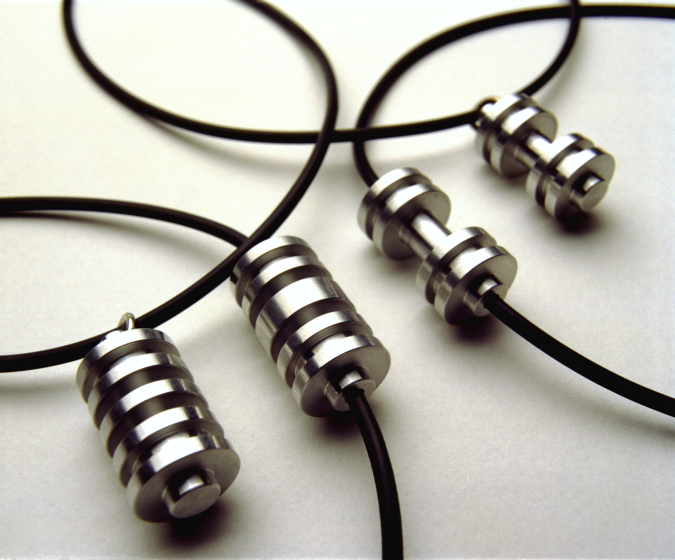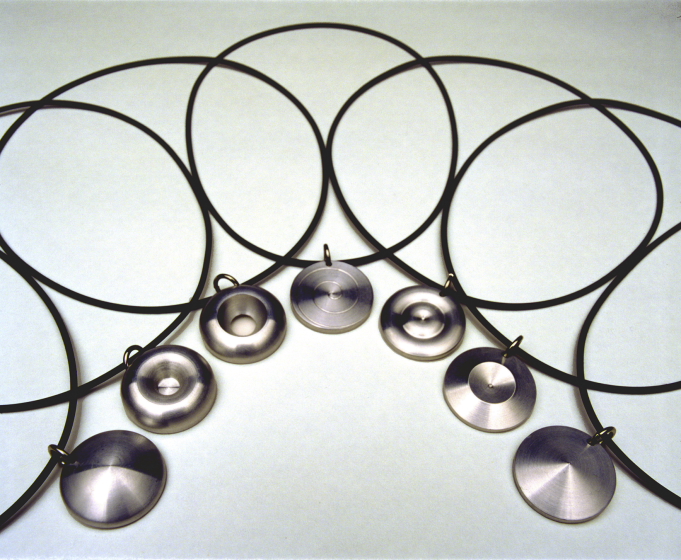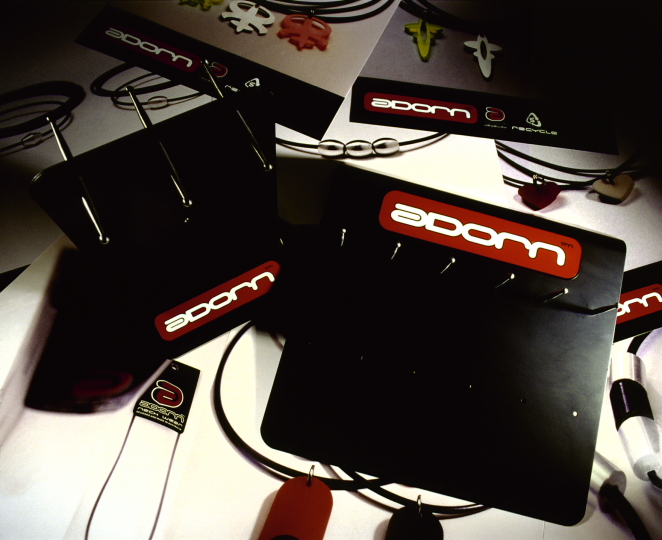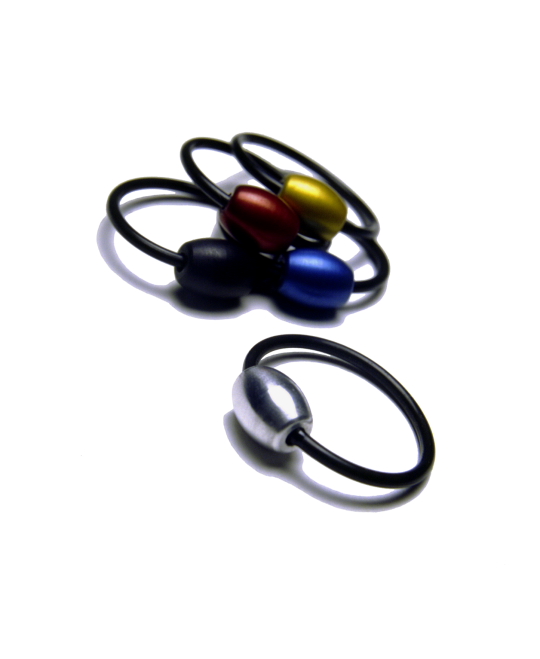
‘CNC Constructed Silver Anodised Aluminium Choker Necklace’ – dahdah for David Jones Sydney in exclusive release – 1997 – Image by Whitehouse
It’s rare to meet an artist or designer who doesn’t dream of making a decent living one piece of work at a time. For the Australian designer, Dean Homicki – and his design licensing and facilitation company, dahdah – the creation of his lamp designs right out of the gates from the Royal Institute of Technology in Melbourne gave him the freedom to express himself. He relished in the manipulation of reclaimed metals into one-of-a-kind works of art. What it didn’t do was allow him to live like the professional designer he yearned to be.
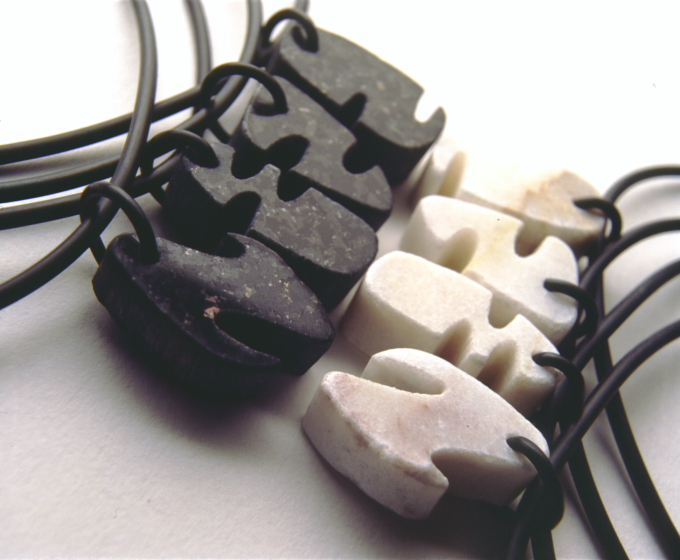
‘Stone pendants’ – Waterjet formed – 1997 in limited release – Adorn Jewelry for dahdah – Image Sam Karanikos
Homicki quickly learned that in the competitive world of design, it’s “non-commercial nature was,” as he says, “very frustrating”. It was time to make a change. In 1995, less than one year before his graduation from RMIT, dahdah landed contracts with two, very big Australian department stores for jewelry collections that combined his technical silversmith skills with his ability to adapt and grow.
Beginning with the Myer department store, Homicki instantly capitalized on his niche for high-tech machinery – using the brand new laser-cutting technology to design necklaces and bracelets with absolute perfection.
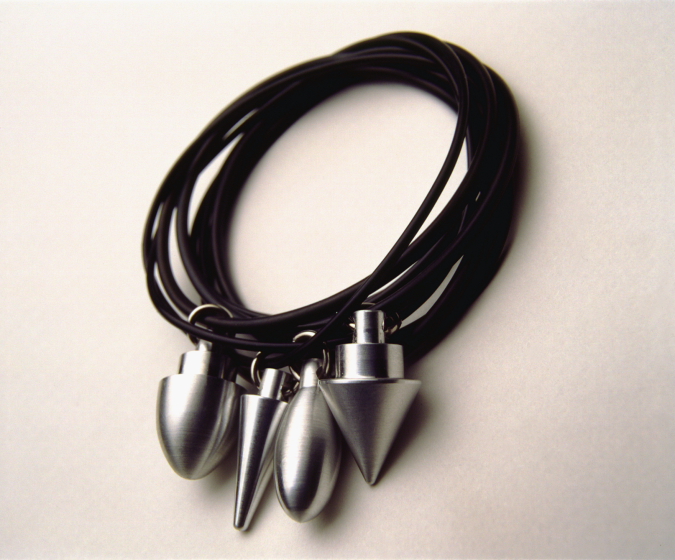
‘Necklaces and Wristbands’ – Aluminium & Nitrile Rubber -Adorn Jewelry for dahdah – 1997 – Image Sam Karanikos
He began with a collection that would appeal to the “young surfer crowd” who gravitated toward the big pendants and edgy style.
Made right inside of his Melbourne workshop, the manufacturing of everything from the packaging and marketing materials to the POS, or point-of-sale displays, gave his brand the professional look that is required of commercial sales.
The designs of the Myer department store jewelry included pendants of metal bullet-like shapes, colorful flowers, stone pendants reminiscent of artifacts and various other cylindrical and rectangular metal designs. The collections were sold in the $10- 20/piece Australian retail price range.
The second jewelry collection was sold at the higher end department store, David Jones. For this specialty retailer, his fashion jewelry took on a more exclusive aesthetic. The innovative technology was used in this case as well, creating elegant necklaces and bracelets crafted by hand using the CNC-turning and milling technology that was still brand new to the market. Eventually Homicki was undersold at each store by larger foreign manufacturers who provided compromised quality products for a much lower cost.
Thanks to dahdah’s award-winning lighting designs – which forced him to think outside of the box with confidence – Homicki gained the skills as a dealer and distributor of his own goods that he would need to survive in the years ahead as an honest and flexible designer and entrepreneur.
This document ‘HALF WAY THROUGH THE MIDDLE’ is coauthored by Sonja Hall & Dean Homicki. It is free to copy, use and alter providing attribution and reference to deanhomicki.com.au is noted. HALF WAY THROUGH THE MIDDLE’ – Dean Homicki – Designer, Entrepreneur, Mentor


